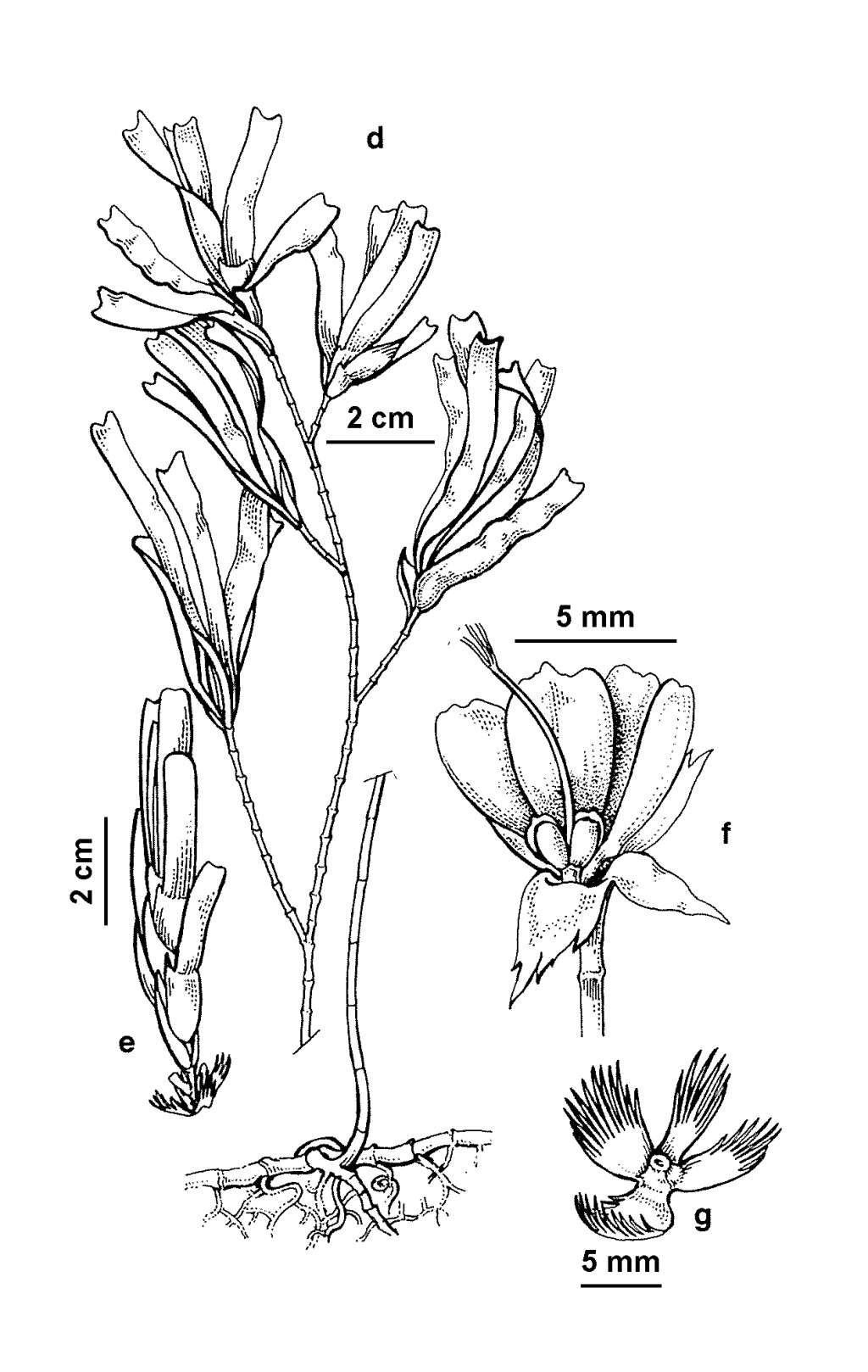Amphibolis
Rhizomes much-branched, lignified, with 1 or 2 roots at each node, producing numerous erect lignified branches; branches wiry and marked by annular scars of fallen leaves. Leaves clustered at the ends of branches. Flowers solitary, terminal on short lateral branches, enclosed by leaves. Male flowers with pedicel very short initially, slightly elongating just prior to anthesis. Female flowers subtended by a bract which becomes deeply and finely frayed; pericarpic lobes fleshy initially, only a hard bony skeleton remains as the fleshy tissue disintegrates. Seedlings viviparous.
2 species, both endemic to southern Australia, only 1 in Victoria.
The seeds germinate soon after fertilization and the developing seedling remains attached to the parent plant for about 7–12 months. After detachment, the seedling is free-floating until the pericarpic skeleton becomes attached to the sand or is caught among the branches of other plants.
Conn, B.J. (1994). Cymodoceaceae. In: Walsh, N.G.; Entwisle, T.J., Flora of Victoria Vol. 2, Ferns and Allied Plants, Conifers and Monocotyledons, pp. 161–162. Inkata Press, Melbourne.
 Spinning
Spinning


